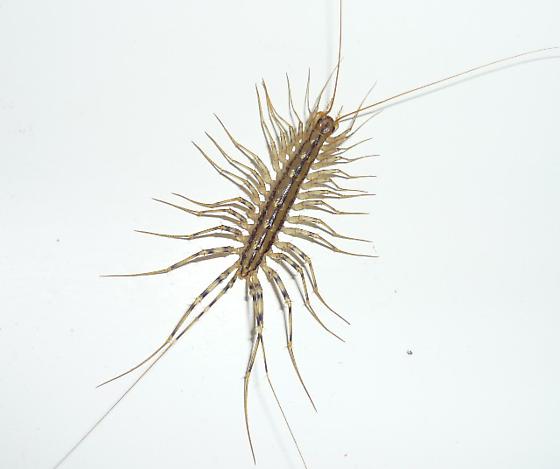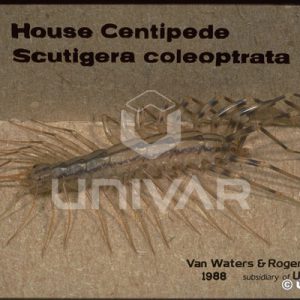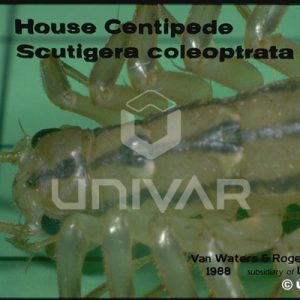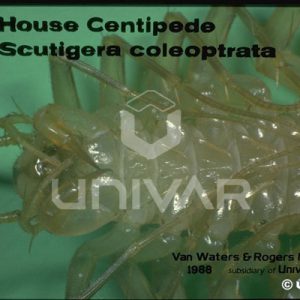
Common Name: Centipede – House centipede
Latin Name: Scutigera coleoptrata
Common Family Name: Centipedes
Latin Family Name: Chilopoda
Other Names:
Origin: This species is native to Mexico, and is now found in the United States from coast to coast.
Biology: The house centipede is an eerie-looking animal, with 15 pairs of extremely long legs that give the impression of a feather moving across the floor or wall. It normally occurs outdoors, hiding under materials on the soil in the daytime, but commonly will enter structures, spending most of its time in damp areas around sinks, basements, crawl spaces, or other areas of higher moisture. Like other centipedes it is a predator on insects such as flies, roaches, and spiders, and may even be found around lights, capturing the insects that are attracted to them. The house centipede does have venom, but its stinging apparatus behind the jaws is too weak to be able to penetrate most human skin, and it is generally considered harmless, but highly beneficial.
Identification: The house centipede can grow to about 1.5 inches long, with 15 pairs of legs that may extend well out to the sides. The legs are easily as long as the body. The color is yellowish with three dark stripes running the length of the body on top. It has a pair of very long antennae and the last pair of legs is extremely elongated, sticking well out to the back of the body.
Characteristics Important in Control: Control consists of habitat modification and possibly pesticide applications. Elimination of the debris and objects on the soil that provides harborage sites will reduce populations, along with the control of insects and other small animals that centipedes feed on. These are highly beneficial arthropods, and they should be encouraged in landscape whenever they are not invading the structure.


